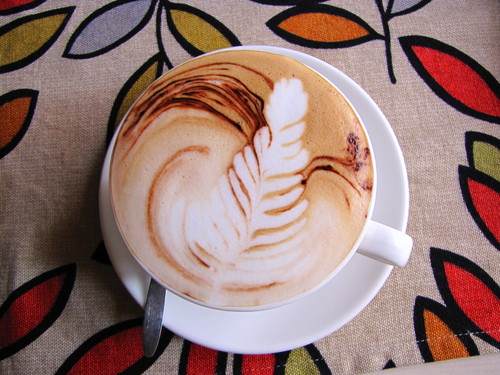The formation and production of milk foam requires stable Italian matching of milk foam latte.
Milk fat
In general, the fat content in milk is about 4-5% (composed of different types of fat) and exists in milk in the form of fat balls with sizes ranging from 0.1 to 10 microns. With triglyceride (triglyceride) as the core, it is surrounded by a film composed of proteins, phospholipids and glycerides. This natural milk fat globule membrane can effectively prevent milk fat from oxidizing or stale.
Protein in milk
Milk proteins are divided into two types-casein and whey proteins, which appear on the surface of the fat ball film. Casein accounts for 80% of the 3-4% fat in milk, mainly in the form of particles 100-200 nanometers in size, called casein colloids, which contain thousands of casein molecules, calcium phosphate, and water. On the other hand, 20% of whey protein appears mainly in separate form or in small clusters in milk. However, whey proteins tend to accumulate in large amounts when milk is heated; this problem can be avoided by pasteurization, which is widely used commercially (72 ℃, 15 seconds), but it is extremely easy to cause whey protein accumulation when milk is heated with UHT (140 ℃, 5 seconds) and sterilization (115 ℃, 10 minutes). The accumulation of these proteins will bring extra consistency to the milk.
Homogenization process (homogenization)
Homogenization is often used in milk processing to reduce the emulsification of milk fat globules (creaming, the oil layer formed on the surface of milk during storage). Emulsification is caused by the low fat density of milk. By reducing the size of fat spheres, the average process slows down the process of emulsification. In the homogenization process, the milk passes through a small high-pressure valve, and the fat ball is broken and refined. In this way, the number of fat globules on the liquid surface increases, and the protein is absorbed by the fat balls on the surface.
Milk foam: protein enhances the stability of milk foam
Just as homogenization can enhance the stability of the surface layer of milk fat balls, protein plays a key role in the stability of the surface layer of milk, whipped cream, and bubbles in ice cream. By beating or injecting (steam), air forms an unstable interface between air and liquid, which requires the adsorption of surfactant components (made up of proteins). Proteins are adsorbed on the surface of bubbles to increase stability. In general, the protein content in milk is sufficient to meet the need for foam stability (3.5% of milk protein, of which only 5% is enough). In milk protein, casein was found to be preferentially adsorbed on the bubble interface. The stable surface layer formed by milk protein forms a stable milk foam. However, the stability of the foam eventually fades away, the liquid in the foam overflows, and the adjacent bubbles merge with each other to form larger and larger bubbles that eventually collapse.

Important Notice :
前街咖啡 FrontStreet Coffee has moved to new addredd:
FrontStreet Coffee Address: 315,Donghua East Road,GuangZhou
Tel:020 38364473
- Prev

Analysis of Italian espresso oil Crema concentrated crema light color Italian blend blue mountain style
What is crema? Why did crema disappear? A series of complex chemical changes occur during coffee roasting to produce large amounts of carbon dioxide. Most of the carbon dioxide will be released naturally during the storage of ripe coffee beans, but more carbon dioxide will remain in the cell wall. The pump pressure correlation of 9 bar is the insoluble oil in emulsified coffee. actually
- Next
Siphon pot extraction coffee boil time shallow roast coffee beans how to deep bake coffee beans coffee utensils
The practical parameters of extraction time: 40 seconds, 50 seconds, 60 seconds, 40 seconds, 50 seconds, 60 seconds, 50 seconds, 60 seconds,
Related
- Beginners will see the "Coffee pull flower" guide!
- What is the difference between ice blog purified milk and ordinary milk coffee?
- Why is the Philippines the largest producer of crops in Liberia?
- For coffee extraction, should the fine powder be retained?
- How does extracted espresso fill pressed powder? How much strength does it take to press the powder?
- How to make jasmine cold extract coffee? Is the jasmine + latte good?
- Will this little toy really make the coffee taste better? How does Lily Drip affect coffee extraction?
- Will the action of slapping the filter cup also affect coffee extraction?
- What's the difference between powder-to-water ratio and powder-to-liquid ratio?
- What is the Ethiopian local species? What does it have to do with Heirloom native species?

